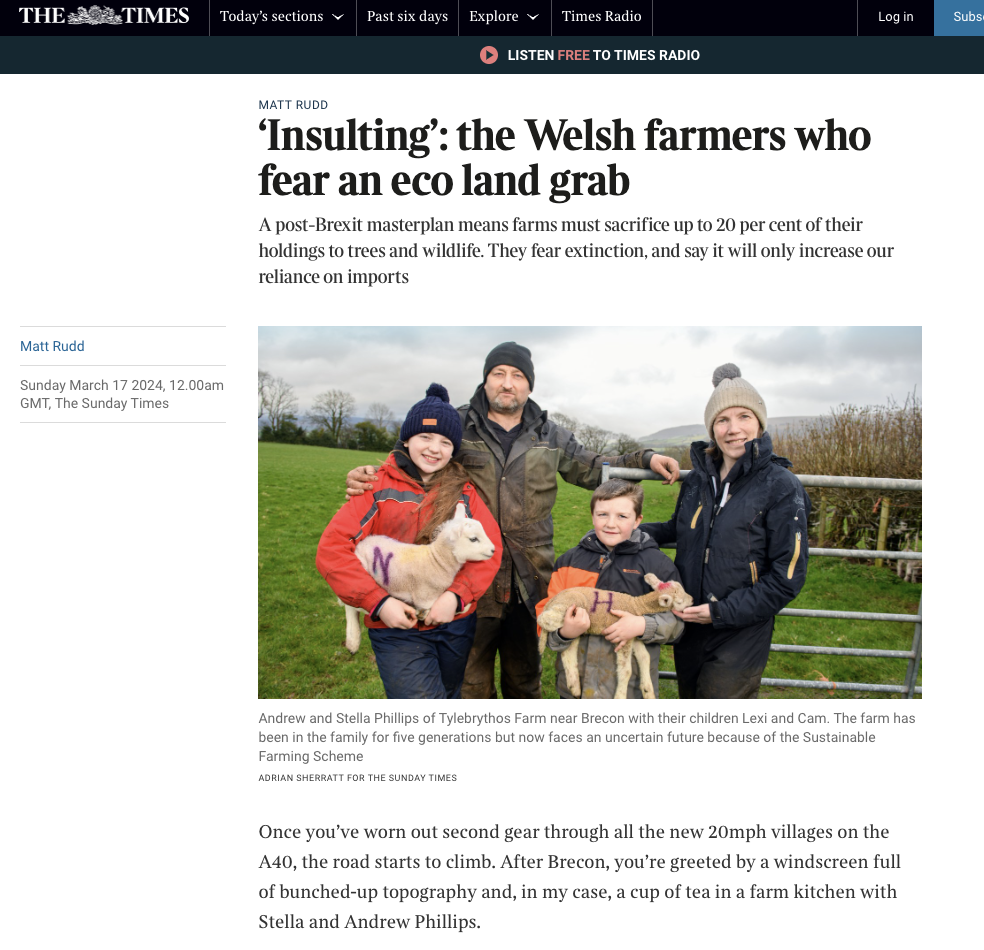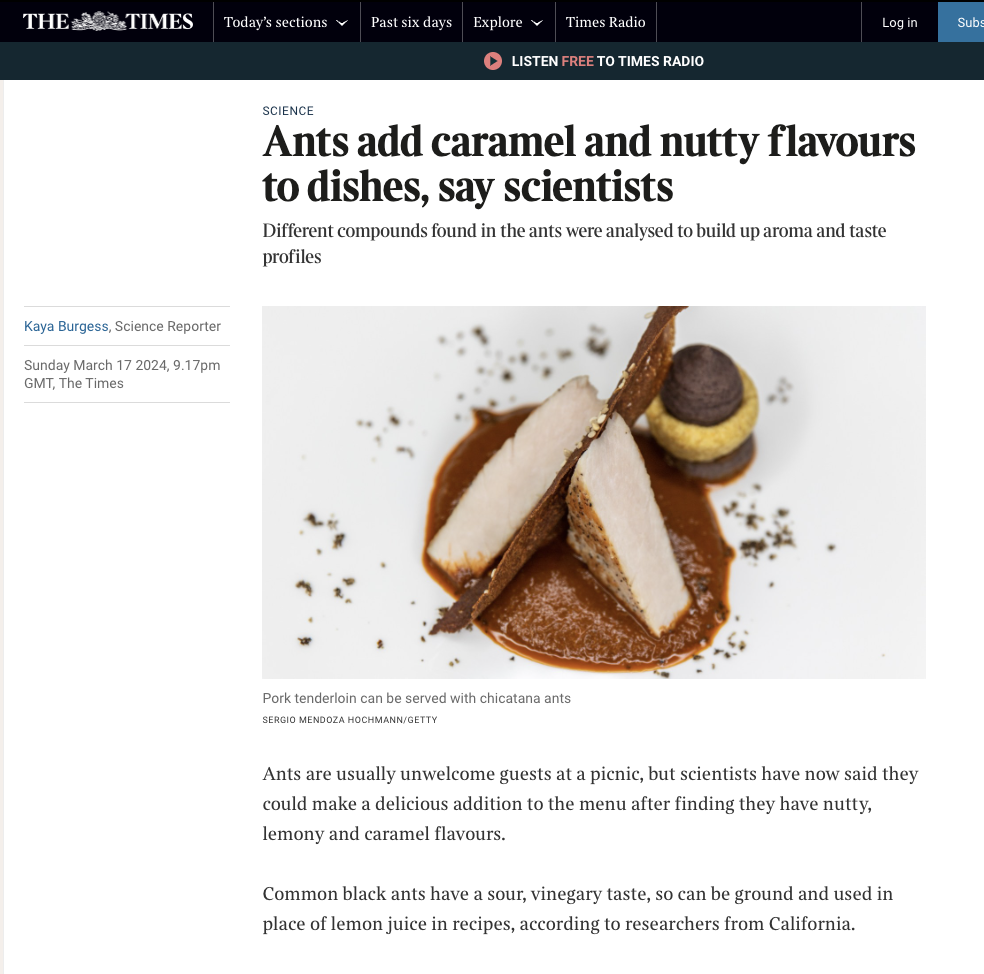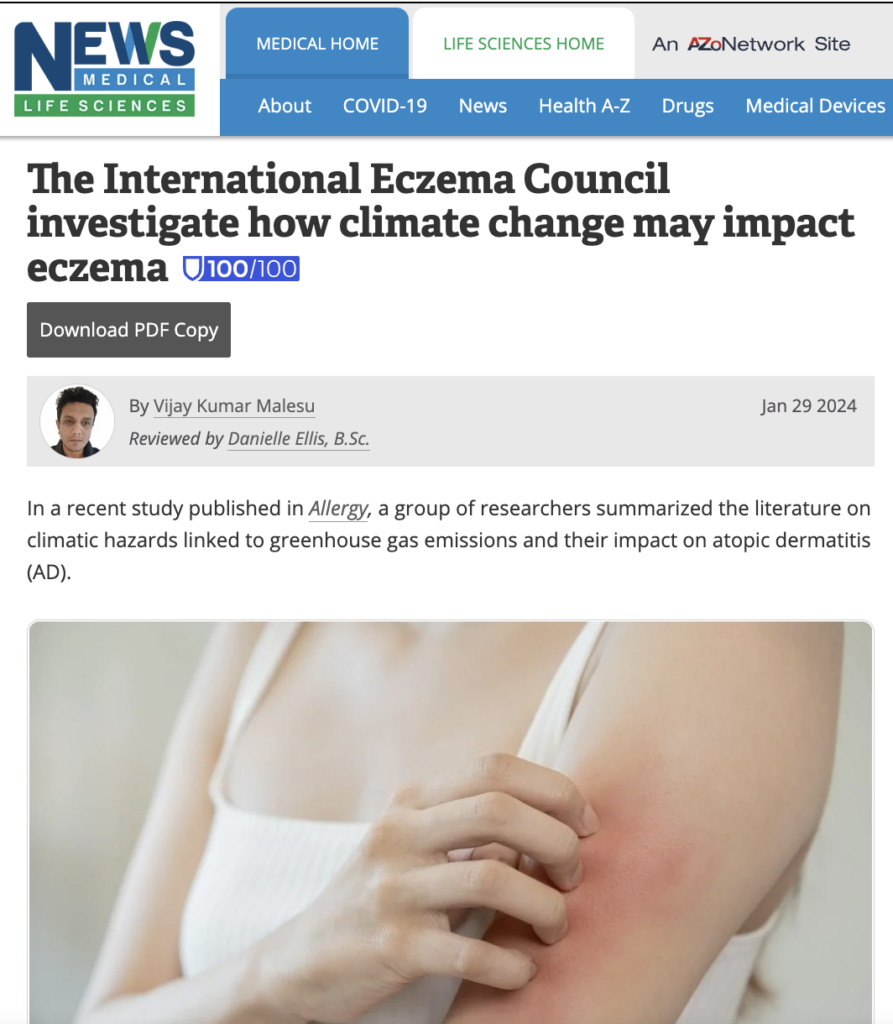‘Insulting’: UK Telegraph: ‘Welsh farmers who fear an eco land grab’ – ‘A post-Brexit masterplan means farms must sacrifice up to 20% of their holdings to trees & wildlife. They fear extinction’

https://www.thetimes.co.uk/article/well-be-finished-the-welsh-farmers-who-fear-an-eco-land-grab-h53spvr7p?utm_source=Sailthru&utm_medium=email&utm_campaign=Environment%20-%20Tuesday%2019th%20March%202024&utm_term=audience_ENVIRONMENT By Matt Rudd Once you’ve worn out second gear through all the new 20mph villages on the A40, the road starts to climb. After Brecon, you’re greeted by a windscreen full of bunched-up topography and, in my case, a cup of tea in a farm kitchen with Stella and Andrew Phillips. They’ve been up […]
We’re Saved! UK Telegraph: ‘Ants pack a punch of flavor’ to food – ‘Add caramel & nutty flavors to dishes, say scientists’ – ‘Black ants have a sour, vinegary taste’

UK Telegraph: Ants are usually unwelcome guests at a picnic, but scientists have now said they could make a delicious addition to the menu after finding they have nutty, lemony and caramel flavours.
Common black ants have a sour, vinegary taste, so can be ground and used in place of lemon juice in recipes, according to researchers from California.
Lab-grown meat — for pets!? ‘Pets eat more meat than’ children! Enter cells ‘replicated in a bioreactor, producing a chicken pâté-like dish’
British pets eat more meat than British children. … Pet animals account for 22 per cent of meat consumption in the UK. … globally, pets account for about 20 per cent of meat consumed. …
Enter the London tech firm Meatly, a start-up which has just produced its first tins of lab-grown meat for cat food. It makes real meat — in this case chicken — but without killing a single animal. Instead chicken cells are extracted from a hen’s egg and replicated in a bioreactor, producing a chicken pâté-like dish. The implications for animal welfare and the climate are clear.
The International Eczema Council investigates ‘how climate change may impact eczema’


The research found mixed outcomes regarding the impact of warming on AD, with some studies indicating an increase in symptoms and others suggesting a decrease. No specific studies that examined the relationship between heat waves and AD were identified. Wildfires, increasingly common due to climate change, were found to exacerbate AD, with studies showing increased rates of clinic visits and symptoms during wildfire events.
Droughts were linked to AD through indirect effects like food insecurity and psychological stress, although direct studies were lacking. The effect of precipitation on AD was found to be complex and region-specific, with some studies showing increased risk and others finding no association.
Only one study was identified that examined the impact of storms on AD, indicating an increase in outpatient visits following storm events. The relationship between floods and AD was also explored, with studies suggesting increased dermatitis visits and emergency room admissions post-flooding.
The study did not find direct evidence linking sea level rise, ocean climate change, or land cover change to AD, though these factors could theoretically impact the condition.
Harvard has halted its long-planned atmospheric geoengineering experiment – After ‘years of controversy & the departure of one of the program’s key researchers’
https://www.technologyreview.com/2024/03/18/1089879/harvard-halts-its-long-planned-atmospheric-geoengineering-experiment/ Harvard has halted its long-planned atmospheric geoengineering experiment The decision follows years of controversy and the departure of one of the program’s key researchers. The basic concept behind solar geoengineering is that the world might be able to counteract global warming by spraying tiny particles in the atmosphere that could scatter sunlight. The plan for […]
